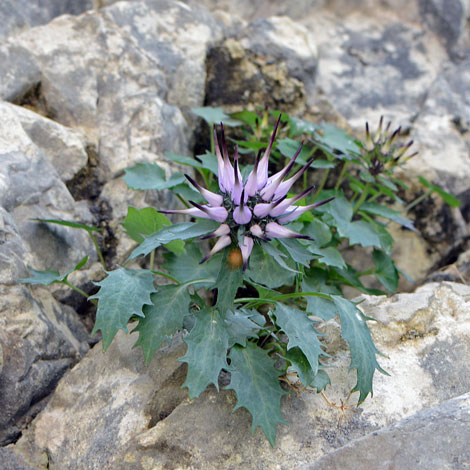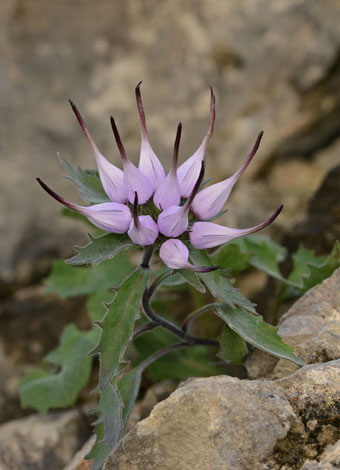Physoplexis comosa Devil's Claw


The nearest genus in appearance to the Devils Claw (also known as Tufted Horned Rampion) is Phyteuma (Rampions) and molecular studies in 2009 actually suggest that Phyteuma and Physoplexis could be merged which would avoid having to maintain the monotypic genus Physoplexis. At one time it was indeed known as Phyteuma comosum. Perhaps though this strange but rather beautiful flower deserves its own genus and unless you knew that it was related to Phyteuma and therefore a member of the Campanulaceae you would probably never guess. It certainly doesn't look much like a Bellflower (Campanula sp).
Physoplexis comosa (comosa means tufted) grows in crevices in limestone or dolomitic rocks at heights of 1,000 feet to 6,500 feet. Although we had to search for it there are at least 170 sites in Italy where these photos were taken, 50 in Slovenia and another 50 in Austria making it a plant "of least concern" in the I.U.C.N. red list of threatened species.




